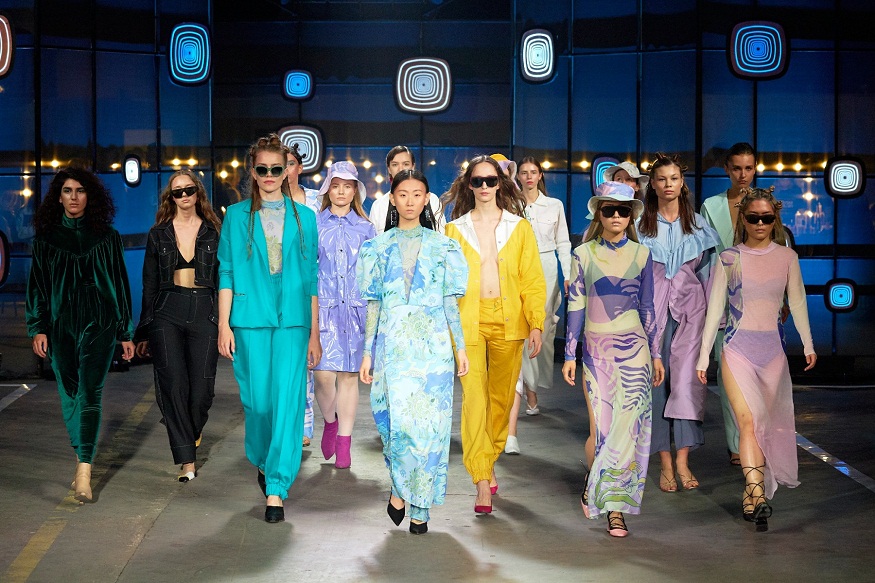Flowy mini dresses have become a staple in the modern wardrobe, combining comfort, style, and versatility. As the fashion industry evolves, these dresses have grown in popularity, becoming a go-to choice for various occasions. This article delves into the market dynamics, key demographics, and influences driving the demand for flowy mini dresses.
The demand for flowy mini dresses has seen a significant rise in recent years. According to a report by Research and Markets, the global women’s dresses and skirts market was valued at USD 37.03 billion in 2023 and is projected to reach USD 57.97 billion by 2030, at a CAGR of 6.61%. This growth is a testament to the growing popularity of dresses, especially flowy mini dresses, which are loved for their comfort and style.
Key Markets and Demographics
Flowy mini dresses have a broad appeal across different demographics and regions. The Asia-Pacific region, particularly China, leads in revenue generation for dresses and skirts, with an estimated market size of USD 20,990 million in 2024, according to Statista. The region’s growing middle class and increasing disposable income are contributing to the growing demand for fashionable clothing.
In terms of demographics, flowy mini dresses are particularly popular among young women aged 18 to 35, who are looking for clothes that are both fashionable and comfortable. This age group is also more likely to shop online, further driving the market via e-commerce platforms.
Influences that promote popularity
There are several factors contributing to the growing popularity of flowy mini dresses. Social media and influencer marketing play a big role, with fashion influencers and celebrities frequently featuring these dresses in their posts. Platforms like Instagram and TikTok have become powerful tools for fashion trends, with flowy mini dresses often featured in style videos and fashion hauls.
Additionally, the shift towards casual and comfortable fashion has made flowy mini dresses a preferred choice for many. The versatility of these dresses, which can be dressed up or down for various occasions, adds to their appeal.
Sustainability is another driving factor. Consumers are increasingly looking for eco-friendly fashion options, and many brands are responding by offering flowy mini dresses made from sustainable materials. According to WGSN, the trend toward sustainable fashion is set to grow, with more brands incorporating eco-friendly practices into their production processes.
According to a trade report, the Spring/Summer 2025 collections in New York highlighted the mini dress’s prominence, featuring a variety of cuts and silhouettes that cater to different tastes and occasions. The #DayToNight mini dress, for example, is designed to seamlessly transition from casual daytime wear to elegant evening wear. This style often features simple silhouettes cut for a fitted but not bodycon fit, making it both comfortable and flattering.
Another popular silhouette is the #SoftVolume mini dress, which takes inspiration from the bouncy poet blouse. This design incorporates more voluminous shapes, moving away from the bodycon silhouettes that have dominated previous seasons. The fluidity and movement of these dresses are enhanced by lightweight fabrics such as chiffon and organza, which are at the heart of the #NuBoheme aesthetic. This trend focuses on a softer, more romantic look, with subtle puffed sleeves and smaller ruffles adding to the overall charm.
Trendy colors and patterns
Colour and pattern play a crucial role in the appeal of flowy mini dresses. The Spring/Summer 2025 collections saw a resurgence of bohemian themes, with a delicate, washed-out colour palette that includes shades like Optic White, Tea Stain, Sea Kelp, Transcendent Pink, Sepia and Warm Amber. These colours are perfect for creating a romantic, ethereal look, which is a key aspect of the #ModernRomantic and #NuBoheme aesthetic.
Patterns also add a unique touch to these dresses. Floral prints, especially those inspired by the #RoseRevival trend, are popular choices. These prints often feature tonal variations that add depth and interest to the fabric. Additionally, #NewRetro graphics and laser-printed patterns have been noted as emerging trends, offering a fresh take on traditional patterns.
Unique features and embellishments
Flowy mini dresses stand out from other styles with their unique features and embellishments. According to a professional report, ruffle embellishments are a major trend for spring/summer 2025. Delicate lace ruffles with a romantic touch are dominating this conversation, while denim ruffles are emerging as a trend to watch. These ruffles add a touch of playfulness and femininity to dresses, making them perfect for both casual and formal occasions.
Fringe is another embellishment that has gained popularity. Designers have been moving away from Western fringe trends and toward its artisanal aspect. Looped fringe adds tactility to dresses, while its most striking applications bring interest to #ElegantComfort basics. Draping is also a key element, with a fluid drape adding movement and dimension to #ElegantSimplicity dresses. This technique allows designers to create layered looks without the need for additional trims, enhancing the versatility of dresses from day to night.
Fabric choice is crucial to achieving the desired look and feel of flowy mini dresses. Lightweight and breathable materials are preferred for their comfort and ability to create a flowing silhouette. Fabrics such as peace silk, organza, chiffon, and FSC-certified viscose and lyocell are popular choices. These materials not only provide comfort but also add a touch of elegance and sophistication to the dresses.
Sustainable and environmentally friendly options
Sustainability is a growing concern in the fashion industry, and many designers are opting for eco-friendly materials in their collections. According to a professional report, materials such as Tencel, Liva, Naia, and modal are used for their sustainable properties. These fabrics are not only eco-friendly but also offer the same level of comfort and style as traditional materials. Additionally, designers are focusing on circularity by designing dresses that can be disassembled and recycled, ensuring minimal environmental impact.



